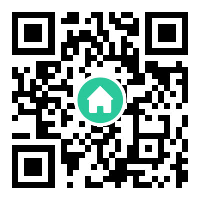In recent years, Telegram crypto groups have emerged as pivotal hubs for cryptocurrency enthusiasts, traders, and blockchain innovators. These digital communities, hosted on the encrypted messaging platform Telegram, offer a space for real-time discussions, market analysis, and project collaborations. As the crypto industry continues to expand, these groups have become critical for sharing insights, navigating volatile markets, and fostering connections within decentralized ecosystems. However, their rapid growth also raises questions about credibility, security, and the potential for misinformation.
The Rise of Telegram Crypto Communities
The popularity of Telegram crypto groups stems from the platform’s unique blend of privacy and accessibility. Unlike traditional social media networks, Telegram allows users to engage anonymously while supporting large member capacities—some groups exceed 50,000 participants. This scalability, combined with features like channels, bots, and encrypted chats, has made it a preferred choice for crypto projects launching token sales, hosting AMAs (Ask Me Anything sessions), or disseminating updates. For retail investors, these groups provide instant access to trends, from meme coins to DeFi protocols, often ahead of mainstream platforms.
Opportunities for Traders and Investors
For many, Telegram crypto groups serve as a treasure trove of actionable intelligence. Seasoned traders share technical analysis charts, while project founders unveil partnerships or roadmap milestones. Subgroups dedicated to niche areas—such as NFT drops or algorithmic trading—enable hyper-focused discussions. Bots within these groups automate tasks like price alerts or portfolio tracking, streamlining decision-making. Additionally, grassroots communities often rally around emerging tokens, creating viral momentum that can influence market behavior. However, the sheer volume of data demands discernment; not every "gem" touted in these groups guarantees returns.
Risks and Challenges in Unmoderated Spaces
While Telegram crypto groups offer value, they are also breeding grounds for scams and manipulation. Pump-and-dump schemes, fake admin impersonations, and phishing links are rampant in poorly moderated communities. Fraudulent projects exploit Telegram’s anonymity to promote exit scams, leaving investors with worthless tokens. Even well-intentioned groups may inadvertently spread misinformation, as market predictions or project claims go unchecked. The absence of centralized oversight means users must exercise extreme caution—verifying sources, cross-referencing data, and avoiding impulsive investments based solely on group chatter.
Best Practices for Navigating Crypto Groups
To maximize the benefits of Telegram crypto groups, participants should adopt a strategic approach. First, prioritize groups with active moderators who enforce rules against spam and fraud. Second, engage with communities tied to verified projects—official channels often display a “verified” badge. Third, leverage bots and tools to filter noise; for example, sentiment analysis bots can gauge market mood. Finally, diversify information sources rather than relying on a single group. Combining Telegram insights with external research reduces reliance on potentially biased or inaccurate content.

The Future of Crypto Discourse on Telegram
As blockchain technology evolves, so too will Telegram crypto groups. Expect increased integration of decentralized tools, such as DAO (Decentralized Autonomous Organization) voting systems or token-gated access for premium communities. Regulatory scrutiny may also shape these spaces, with governments pushing for accountability in anonymous forums. Meanwhile, advancements in AI moderation could help combat scams without compromising privacy. Regardless of changes, Telegram’s role in crypto discourse will likely endure, driven by its adaptability and the industry’s demand for unfiltered, real-time communication.
In conclusion, Telegram crypto groups represent both the democratization of financial knowledge and the Wild West of digital asset trading. They empower individuals with information but demand vigilance against risks. As the crypto landscape matures, these communities will remain indispensable—yet their true value lies in users’ ability to separate signal from noise.












